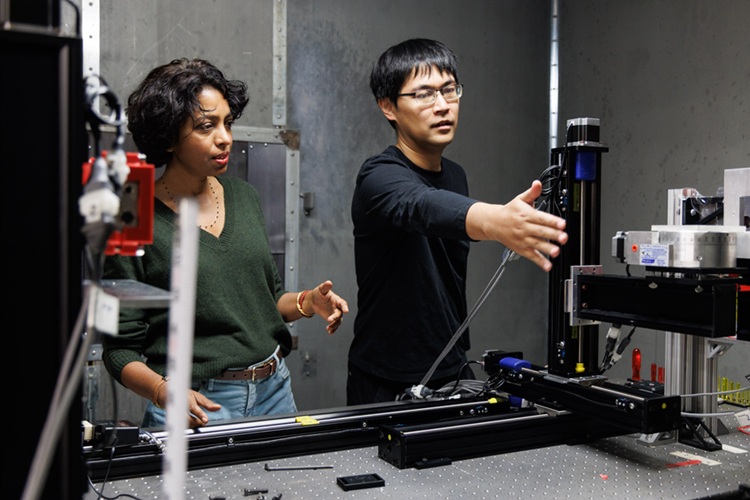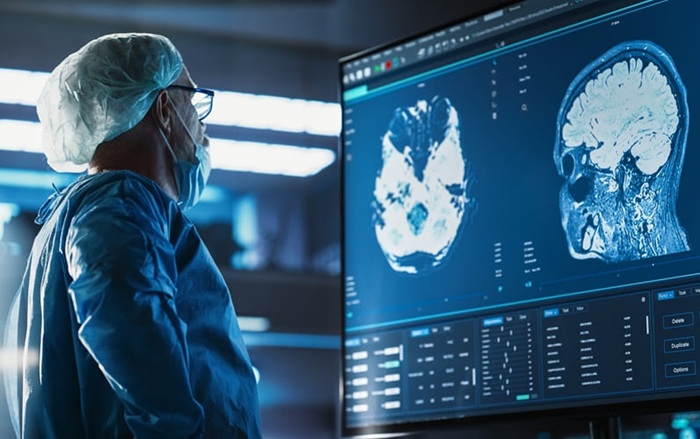Increased Breast Cancer Driving Global Digital Breast Tomosynthesis Market
|
By MedImaging International staff writers Posted on 31 Dec 2018 |

Image: Breast cancer has become one of the most common malignancies in women across the world and accounts for the second-largest number of diagnosed cases (Photo courtesy of Technavio Research).
The global digital breast tomosynthesis market is expected to grow at a CAGR of around 13% for the period 2019-2023, driven by the increasing incidence of breast cancer, growing popularity of digital breast tomosynthesis and consistent launch of new products.
These are the latest findings of Technavio Research, (London, UK), a global technology research and advisory company.
Breast cancer has become one of the most common malignancies in women across the world and accounts for the second-largest number of diagnosed cases. Additionally, the associated risk factors for breast cancer are also on the rise. Factors such as lack of physical activity, poor dietary habits, tobacco use, alcohol consumption, and high body mass index are contributing to the rise in cancer incidence. Hence, the increasing incidence of breast cancer is boosting the demand for digital breast tomosynthesis and in turn, fueling the growth of the market.
Based on product, the 2D/3D combination systems segment is expected to account for the highest share in the digital breast tomosynthesis market. The use of computer-aided detection (CAD) for digital breast tomosynthesis is one of the major trends being witnessed in the market. CAD systems are playing an increasingly pivotal role in the interpretation of digital breast tomosynthesis images, aiding clinicians in detecting lesions with higher efficiency and effectiveness. CAD has the potential to increase cancer detection rates, reduce the 3D tomosynthesis interpretation time and optimize reading workflow, and reduce false-positive rates. The use of CAD systems is helping to overcome some of the limitations of the existing digital breast tomosynthesis.
Geographically, the Americas held the largest market share of more than 74% in 2018, followed by the EMEA and APAC. The Americas is expected to continue dominating the digital breast tomosynthesis market during the forecast period with the highest incremental growth.
Related Links:
Technavio Research
These are the latest findings of Technavio Research, (London, UK), a global technology research and advisory company.
Breast cancer has become one of the most common malignancies in women across the world and accounts for the second-largest number of diagnosed cases. Additionally, the associated risk factors for breast cancer are also on the rise. Factors such as lack of physical activity, poor dietary habits, tobacco use, alcohol consumption, and high body mass index are contributing to the rise in cancer incidence. Hence, the increasing incidence of breast cancer is boosting the demand for digital breast tomosynthesis and in turn, fueling the growth of the market.
Based on product, the 2D/3D combination systems segment is expected to account for the highest share in the digital breast tomosynthesis market. The use of computer-aided detection (CAD) for digital breast tomosynthesis is one of the major trends being witnessed in the market. CAD systems are playing an increasingly pivotal role in the interpretation of digital breast tomosynthesis images, aiding clinicians in detecting lesions with higher efficiency and effectiveness. CAD has the potential to increase cancer detection rates, reduce the 3D tomosynthesis interpretation time and optimize reading workflow, and reduce false-positive rates. The use of CAD systems is helping to overcome some of the limitations of the existing digital breast tomosynthesis.
Geographically, the Americas held the largest market share of more than 74% in 2018, followed by the EMEA and APAC. The Americas is expected to continue dominating the digital breast tomosynthesis market during the forecast period with the highest incremental growth.
Related Links:
Technavio Research
Latest Industry News News
- GE HealthCare and NVIDIA Collaboration to Reimagine Diagnostic Imaging
- Patient-Specific 3D-Printed Phantoms Transform CT Imaging
- Siemens and Sectra Collaborate on Enhancing Radiology Workflows
- Bracco Diagnostics and ColoWatch Partner to Expand Availability CRC Screening Tests Using Virtual Colonoscopy
- Mindray Partners with TeleRay to Streamline Ultrasound Delivery
- Philips and Medtronic Partner on Stroke Care
- Siemens and Medtronic Enter into Global Partnership for Advancing Spine Care Imaging Technologies
- RSNA 2024 Technical Exhibits to Showcase Latest Advances in Radiology
- Bracco Collaborates with Arrayus on Microbubble-Assisted Focused Ultrasound Therapy for Pancreatic Cancer
- Innovative Collaboration to Enhance Ischemic Stroke Detection and Elevate Standards in Diagnostic Imaging
- RSNA 2024 Registration Opens
- Microsoft collaborates with Leading Academic Medical Systems to Advance AI in Medical Imaging
- GE HealthCare Acquires Intelligent Ultrasound Group’s Clinical Artificial Intelligence Business
- Bayer and Rad AI Collaborate on Expanding Use of Cutting Edge AI Radiology Operational Solutions
- Polish Med-Tech Company BrainScan to Expand Extensively into Foreign Markets
- Hologic Acquires UK-Based Breast Surgical Guidance Company Endomagnetics Ltd.
Channels
Radiography
view channel
X-Ray Breakthrough Captures Three Image-Contrast Types in Single Shot
Detecting early-stage cancer or subtle changes deep inside tissues has long challenged conventional X-ray systems, which rely only on how structures absorb radiation. This limitation keeps many microstructural... Read more
AI Generates Future Knee X-Rays to Predict Osteoarthritis Progression Risk
Osteoarthritis, a degenerative joint disease affecting over 500 million people worldwide, is the leading cause of disability among older adults. Current diagnostic tools allow doctors to assess damage... Read moreMRI
view channel
Novel Imaging Approach to Improve Treatment for Spinal Cord Injuries
Vascular dysfunction in the spinal cord contributes to multiple neurological conditions, including traumatic injuries and degenerative cervical myelopathy, where reduced blood flow can lead to progressive... Read more
AI-Assisted Model Enhances MRI Heart Scans
A cardiac MRI can reveal critical information about the heart’s function and any abnormalities, but traditional scans take 30 to 90 minutes and often suffer from poor image quality due to patient movement.... Read more
AI Model Outperforms Doctors at Identifying Patients Most At-Risk of Cardiac Arrest
Hypertrophic cardiomyopathy is one of the most common inherited heart conditions and a leading cause of sudden cardiac death in young individuals and athletes. While many patients live normal lives, some... Read moreUltrasound
view channel
Wearable Ultrasound Imaging System to Enable Real-Time Disease Monitoring
Chronic conditions such as hypertension and heart failure require close monitoring, yet today’s ultrasound imaging is largely confined to hospitals and short, episodic scans. This reactive model limits... Read more
Ultrasound Technique Visualizes Deep Blood Vessels in 3D Without Contrast Agents
Producing clear 3D images of deep blood vessels has long been difficult without relying on contrast agents, CT scans, or MRI. Standard ultrasound typically provides only 2D cross-sections, limiting clinicians’... Read moreNuclear Medicine
view channel
PET Imaging of Inflammation Predicts Recovery and Guides Therapy After Heart Attack
Acute myocardial infarction can trigger lasting heart damage, yet clinicians still lack reliable tools to identify which patients will regain function and which may develop heart failure.... Read more
Radiotheranostic Approach Detects, Kills and Reprograms Aggressive Cancers
Aggressive cancers such as osteosarcoma and glioblastoma often resist standard therapies, thrive in hostile tumor environments, and recur despite surgery, radiation, or chemotherapy. These tumors also... Read more
New Imaging Solution Improves Survival for Patients with Recurring Prostate Cancer
Detecting recurrent prostate cancer remains one of the most difficult challenges in oncology, as standard imaging methods such as bone scans and CT scans often fail to accurately locate small or early-stage tumors.... Read moreGeneral/Advanced Imaging
view channel
New Algorithm Dramatically Speeds Up Stroke Detection Scans
When patients arrive at emergency rooms with stroke symptoms, clinicians must rapidly determine whether the cause is a blood clot or a brain bleed, as treatment decisions depend on this distinction.... Read more
3D Scanning Approach Enables Ultra-Precise Brain Surgery
Precise navigation is critical in neurosurgery, yet even small alignment errors can affect outcomes when operating deep within the brain. A new 3D surface-scanning approach now provides a radiation-free... Read moreImaging IT
view channel
New Google Cloud Medical Imaging Suite Makes Imaging Healthcare Data More Accessible
Medical imaging is a critical tool used to diagnose patients, and there are billions of medical images scanned globally each year. Imaging data accounts for about 90% of all healthcare data1 and, until... Read more





















